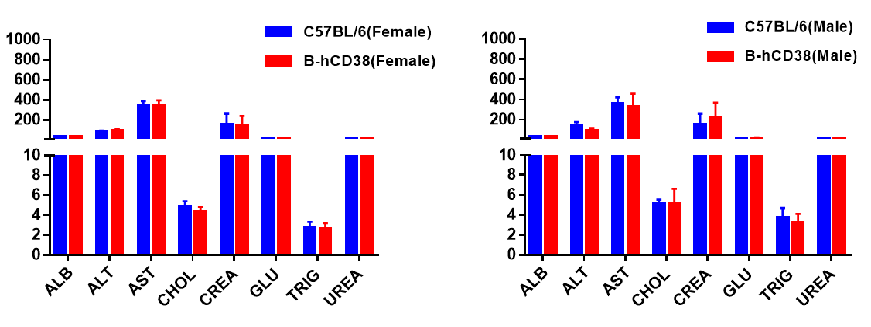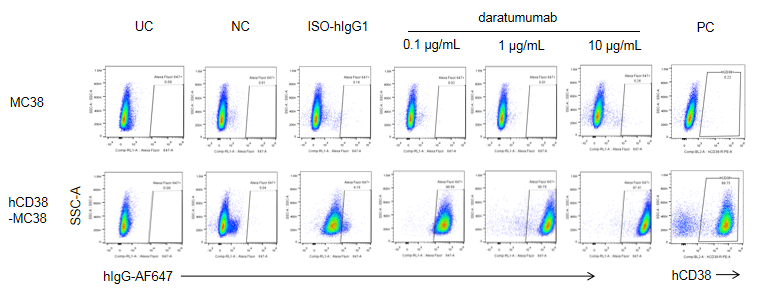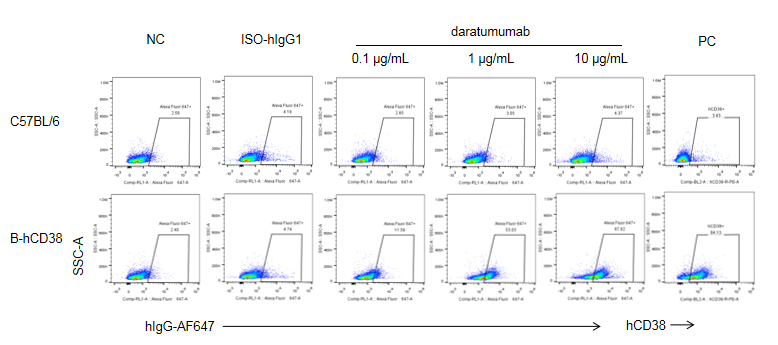| Strain Name | C57BL/6-Cd38tm3(CD38)/Bcgen | Common Name | B-hCD38 mice |
| Background | C57BL/6 | Catalog number |
110046 |
| Aliases | CD38, ADPRC 1, ADPRC1 | ||
CD38 is a 42 kD glycoprotein, also known as T10. It is an ADP-ribosyl hydrolase, expressed on B cells, NK cells, a subset of T cells, brain, muscle, and kidney. In mouse, CD38 expression is downregulated on germinal center B cells and plasma cells, whereas this is not the case for humans. By functioning as both a cyclase and a hydrolase, CD38 mediates lymphocyte activation, as well as adhesion and metabolism of cADPR and NAADP. CD31 is also the ligand of CD38. NAD+ is disassembled into byproducts that flow in the BM plasma fluid within the myeloma niche, accumulating variable amounts of ADO. Most of ADO is taken-up by purinergic cell receptors (ADOR) expressed by bone cells or immune cells inside the niche. The outcome is either a block of the effectiveness of immune cells (Teff,NK, TAMs) that are capable of destroying tumor cells or that increase the number of regulatory T-cells (Tregs), mesenchymal derived stromal cells (MDSC), or dendritic cells (DC) which suppress immune cells from responding to the tumor. Increased expression of CD38 is an unfavourable diagnostic marker in chronic lymphocytic leukemia and is associated with increased disease progression. CD38 is also used as a target for daratumumab (Darzalex), a medicine that has been approved for the treatment of multiple myeloma.
mRNA expression analysis
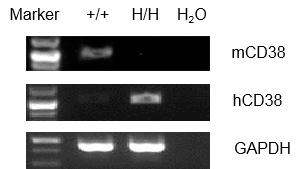
Strain specific analysis of CD38 gene expression in WT and hCD38 mice by RT-PCR. Mouse Cd38 mRNA was detectable only in splenocytes of wild-type (+/+) mice. Human CD38 mRNA was detectable only in H/H, but not in +/+ mice.
Protein expression analysis
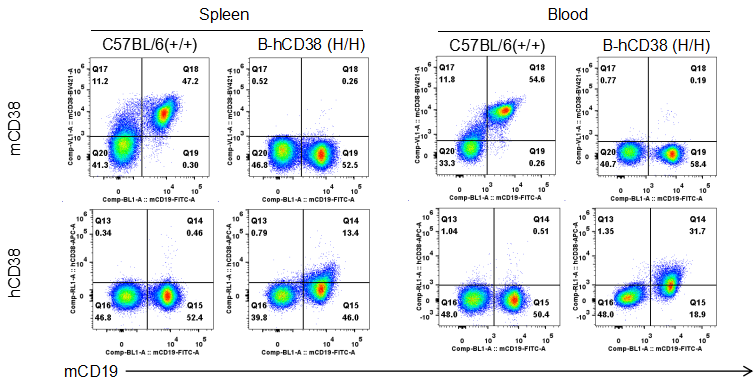
Protein expression analysis
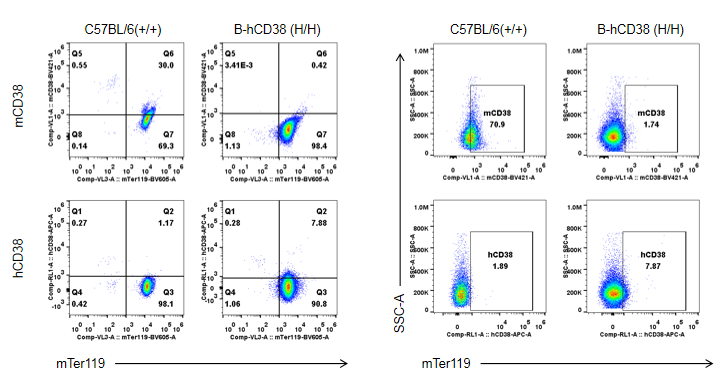
Strain specific CD38 expression analysis in homozygous B-hCD38 mice by flow cytometry. Blood were collected from WT and homozygous B-hCD38 (H/H) mice, and analyzed by flow cytometry with species-specific anti-CD38 antibody. Mouse CD38 was detectable in WT mice. Human CD38 was exclusively detectable in homozygous B-hCD38 but not WT mice.
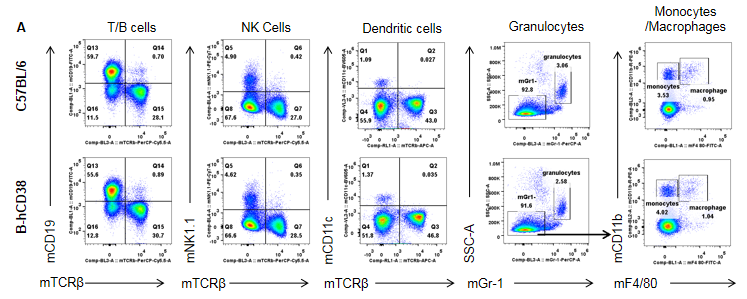
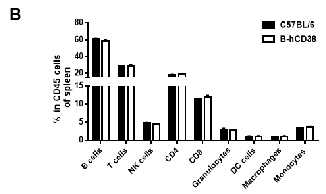
Analysis of splenic leukocyte subpopulations by FACS
Splenocytes were isolated from female C57BL/6 and B-hCD38 mice (n=3, 6 weeks-old) and analyzed by flow cytometry to assess leukocyte subpopulations. (A) Representative FACS plots gated on single live CD45+ cells for further analysis. (B) Results of FACS analysis. Percentages of T, B, NK cells, monocytes/macrophages, and DC were similar in homozygous B-hCD38 mice and C57BL/6 mice, demonstrating that introduction of hCD38 in place of its mouse counterpart does not change the overall development, differentiation, or distribution of these cell types in spleen. Values are expressed as mean ± SEM.
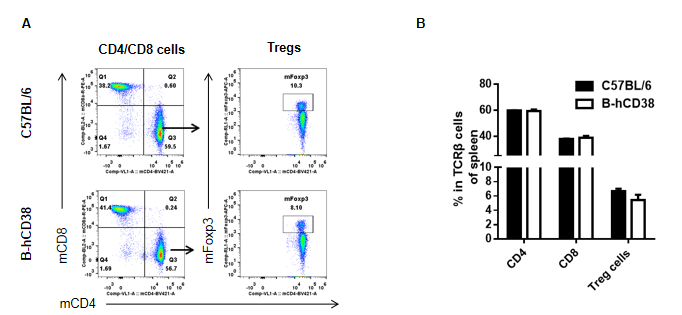
Analysis of splenic T cell subpopulations by FACS
Splenocytes were isolated from female C57BL/6 and B-hCD38 mice (n=3, 6 weeks-old) and analyzed by flow cytometry for T cell subsets. (A) Representative FACS plots gated on TCRβ+ T cells and further analyzed. (B) Results of FACS analysis. Percentages of CD8+, CD4+, and Treg cells were similar in homozygous B-hCD38 and C57BL/6 mice, demonstrating that introduction of hCD38 in place of its mouse counterpart does not change the overall development, differentiation or distribution of these T cell subtypes in spleen. Values are expressed as mean ± SEM.
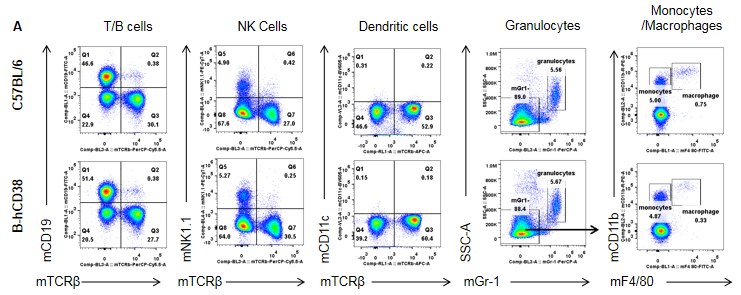
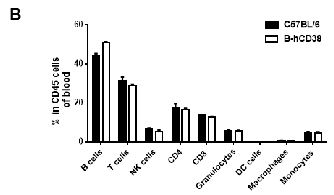
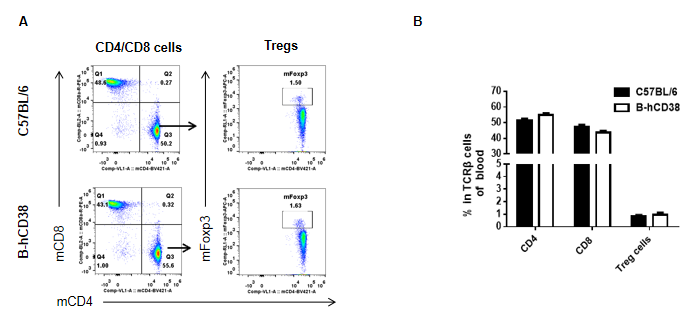
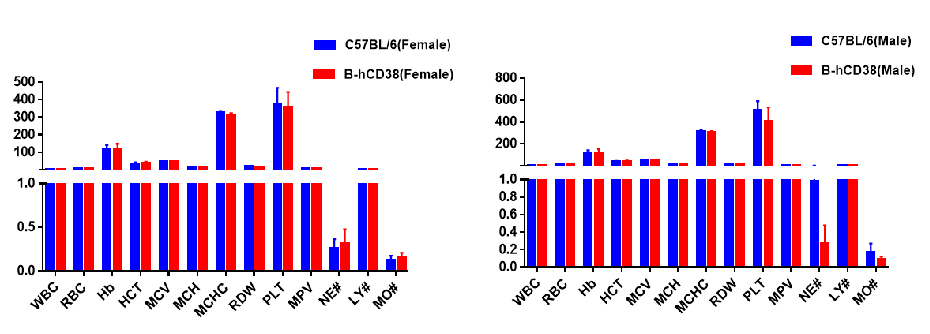
Complete blood count (CBC). Blood from C57BL/6 and B-hCD38 mice (n=5, 6 week-old, female and male) were collected and analyzed for CBC. Any measurement of B-hCD38 mice in the panel were similar to C57BL/6, and there was no differences between male and female mice, indicating that humanized mouse does not change blood cell composition and morphology. Values are expressed as mean ± SEM.
Blood chemistry results
